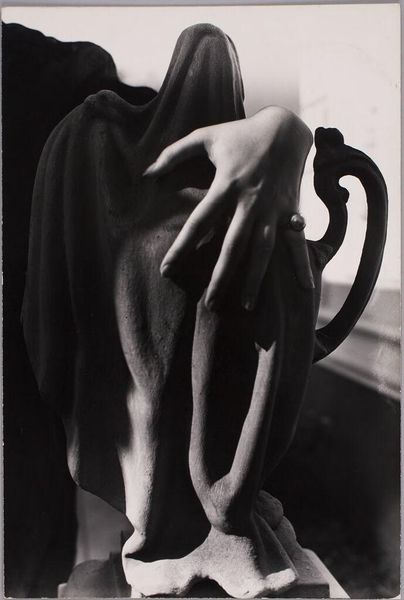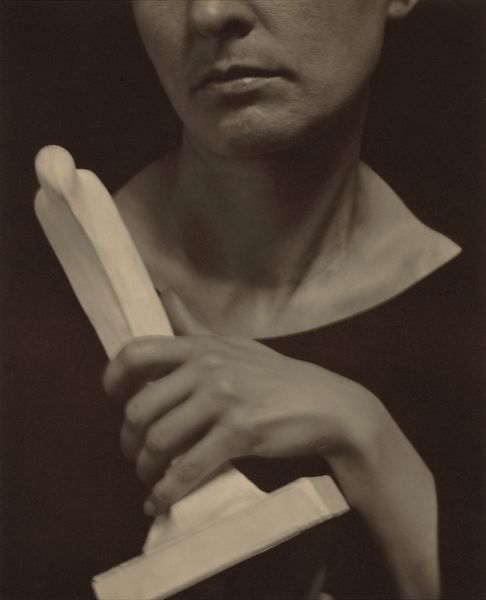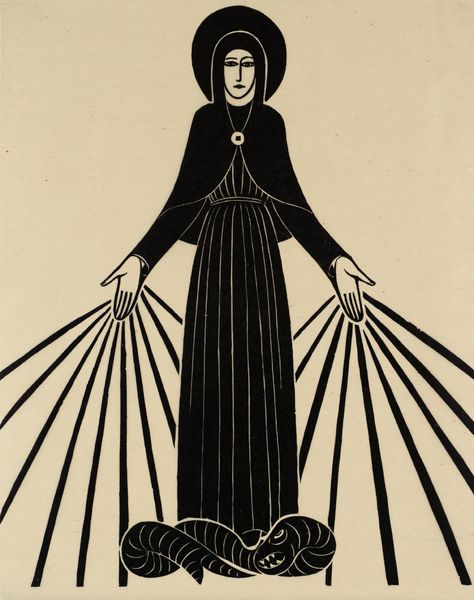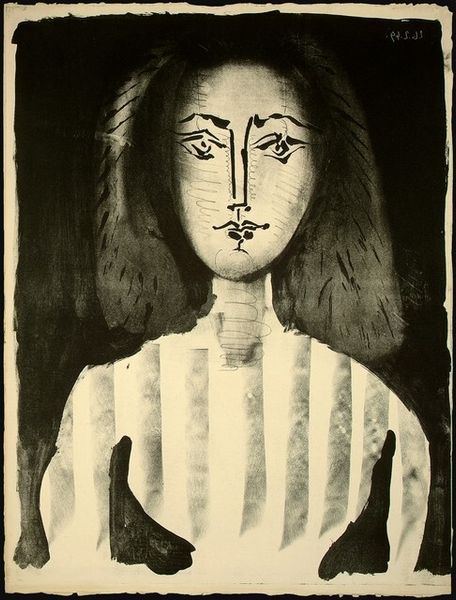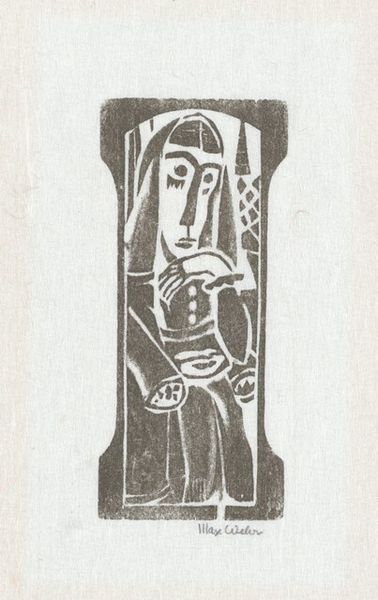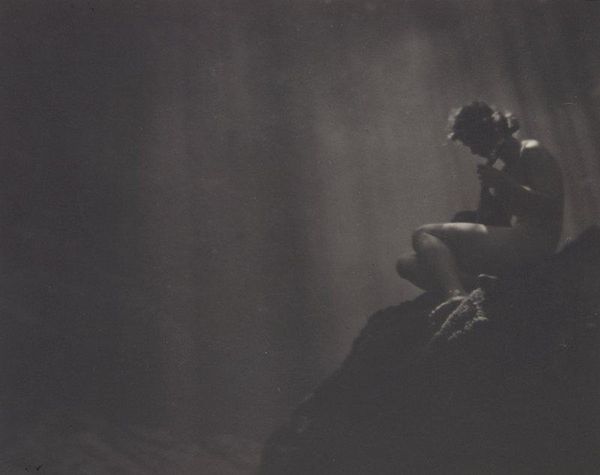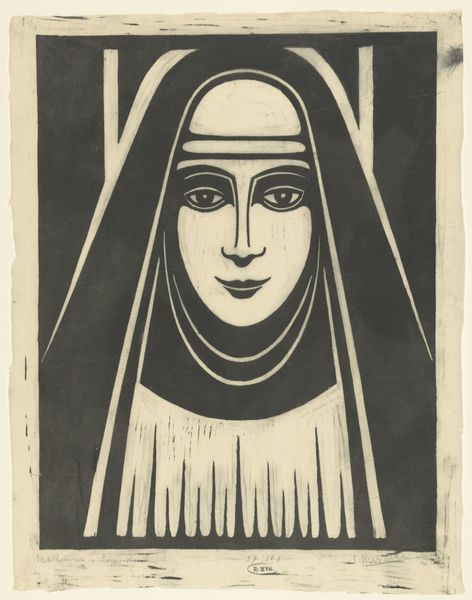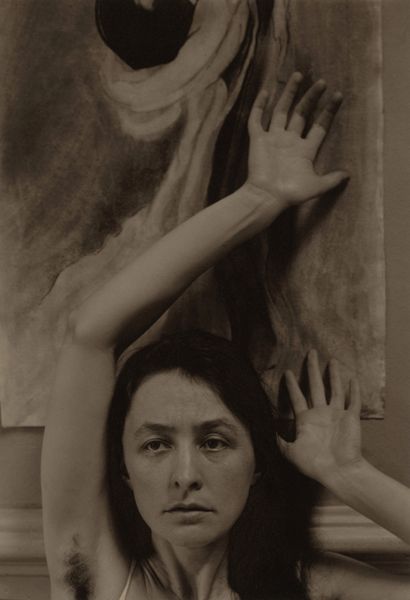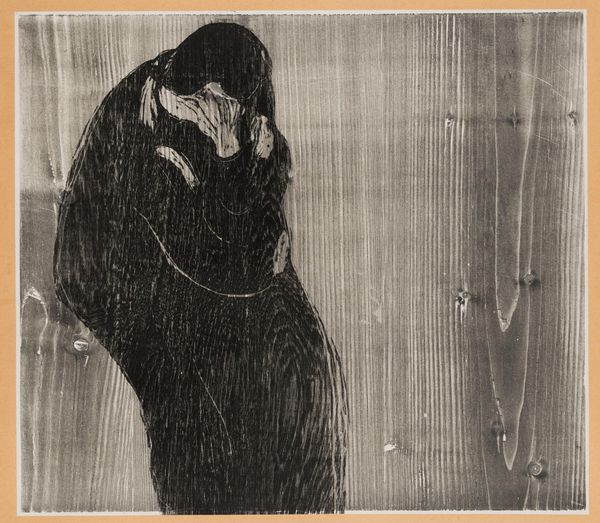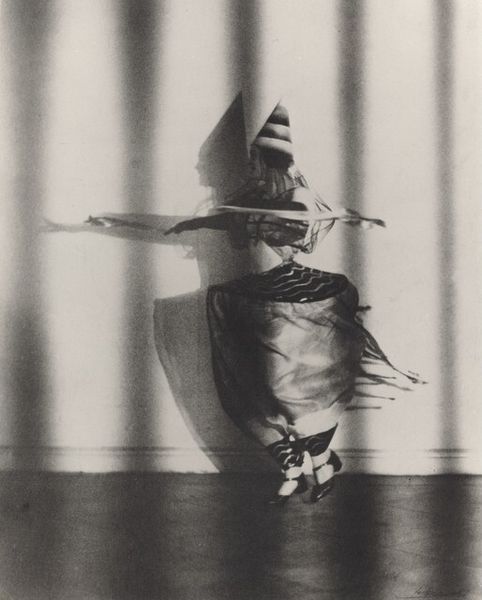
print, photography, sculpture
#
portrait
#
still-life-photography
#
portrait image
# print
#
sculpture
#
photography
#
sculpture
#
statue
Dimensions: image: 26.2 x 20.2 cm (10 5/16 x 7 15/16 in.) sheet: 40.3 x 31.4 cm (15 7/8 x 12 3/8 in.)
Copyright: National Gallery of Art: CC0 1.0
Curator: Let's look now at Paul Strand's "Virgin, San Felipe, Oaxaca," a gelatin silver print he likely made sometime between 1933 and 1967. Editor: My immediate impression is one of reverence, though also of almost oppressive stillness. The grayscale palette seems to intensify the solemnity, but also brings focus to the materials present. Curator: It certainly evokes a potent sense of the sacred. Note how the Virgin, while ostensibly the central figure, seems almost overwhelmed by the sheer darkness surrounding her. This reinforces a cultural memory of faith enduring even within overwhelming hardship. Editor: Yes, the visual weight certainly leans toward the Virgin’s drapery and surroundings, doesn't it? I’m curious about the textiles: that dark, enveloping mantle contrasted with what appears to be delicate lace at her neck and the stiffer material used in the rest of the sculpture. The construction techniques tell a story of craftsmanship. Curator: Those crafted details are indeed significant. The lace hints at a degree of finery amidst what otherwise speaks of austerity and even poverty. We could interpret the halo and ornamentation surrounding her head as indicative of her divine status, and a testament to the enduring iconography that stretches back centuries. Editor: And yet the setting isn't ornate. It’s the backdrop of daily life; the floral pattern could even be wallpaper, which elevates humble, everyday materials alongside this image of sacred womanhood. I imagine the handiwork, possibly the work of women within the community, creating these textures— a blending of the divine and the domestic sphere. Curator: That interweaving is very astute. In many cultural traditions, such effigies bridge the mortal and the immortal. I wonder about its presence in homes and churches – a focal point of both personal meditation and collective devotion. Editor: Considering the production of the image, Strand, who worked closely with the local population, made specific choices. Photographing it emphasized particular aspects and textures; thus shifting our perspective of its value. Curator: It is an enduring image that compels consideration of both its sacred symbolism and also the socio-economic circumstances in which this specific iteration exists. Editor: Indeed. Considering material realities allows for more nuanced comprehension and richer perspectives on artistic interpretation.
Comments
No comments
Be the first to comment and join the conversation on the ultimate creative platform.

